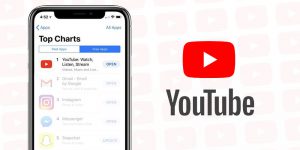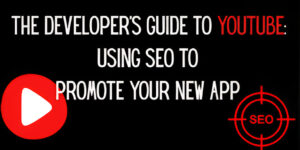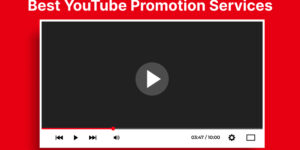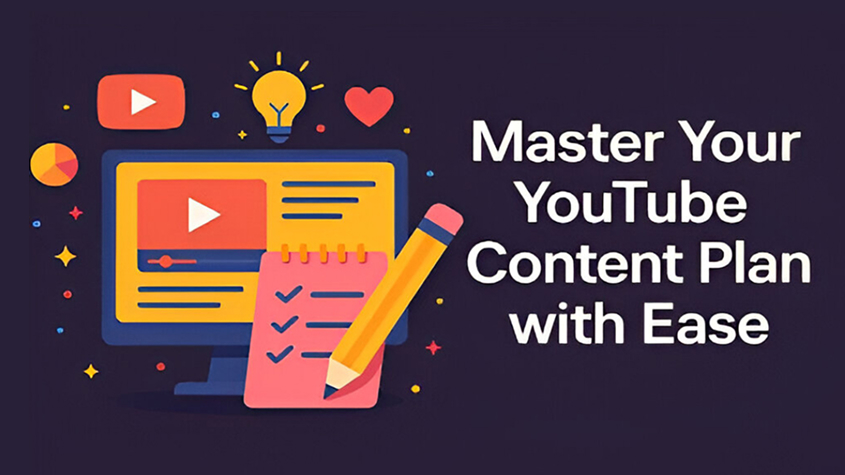
Ever sat down with your camera, your ‘do all set, tea in tow, and. none the wiser what your next YouTube video should entail? That’s when your YouTube content strategy chimes in, “You forgot about me again, didn’t you?” It does, though. Panicked creativity sometimes gets the upper hand over strategy. But a solid YouTube content strategy is what distinguishes the accidentally viral from the reliably popular. And that’s what we are doing today—thanks to a dash of creative structure, new tools, and, indeed, a dash of humor.
What is a YouTube Content Plan, Anyway?
Don’t overthink: a YouTube strategy is a blueprint. Your editorial calendar, your creative plan, and your worry reducer are all bundled up in one small package. A better one guarantees your uploads are consistent, your message is consistent, and your audience comes back like they’re counting down to the premiere date for a Netflix series.
But with a caveat: it’s not necessarily about posting more. It’s about posting better. A solitary, well-made video can trump a half-dozen half-hearted posts. Where strategy, tone, and timing swim together like synchronized swimmers in the algorithmic pool.
That’s exactly where TopTierSMM comes in. If you want to learn more about social media, visit TopTierSMM. From mastering Instagram growth hacks to building a loyal audience on TikTok, TopTierSMM offers actionable insights for every platform. Learn how to create engaging content, boost your visibility, and turn followers into fans.
Aspiring influencers and growing brands alike can rely on TopTierSMM for powerful tools and strategies to level up their social media presence.
Also read: Best Free Podcast Editing Software for Content Creators
Why Creators Often Ditch the Plan

Consistency is difficult. Burnout as a creator exists. And life? That doesn’t exactly put itself on hold until your YouTube analytics are stabilized.
Most creatives begin with the best of intentions, schedules, ideas, even batch shooting, only to have wham. A client call, edit disaster, or life interrupting your schedule halts the process. That’s why the best YouTube content schedules are flexible. They are adaptable. They are customized to your ability and creativity.
It’s here, precisely, where creatives understand that the process of growth requires assistance—not conflict.
Also Read: Role of SEO in Content Marketing: How to Optimize Content for Users
How to Structure a Plan That Actually Works
Shatter the myth of planning content: you don’t require a 30-tab spreadsheet or team of producers. You require focus. Here’s a framework to work from:
1. Content Pillars = Identity
Establish your 2–4 key topics. You could have as a chef: “Fast Recipes,” “Kitchen Hacks,” “Budget Meals,” and “Cooking Fail Reactions.”
These are your content pillars. They encapsulate your message and prevent you from drifting off into the realm of irrelevance (such as the occasion when you insulted pet shampoos as a pastry chef.)
2. Weekly Themes = Variety
Week-to-week, you need to alternate the thematic material. You need a tutorial week, a storytelling week, and a challenge week. You need diversity to captivate the audience and the algorithm’s attention.
The effective YouTube content strategy applies these loops to build anticipation—e.g., weekly programming with rotating flavors.
3. Script, Batch, Breath
Script all of your next 4 video scripts at the same time. Produce all of them at the same time as well. Batching gives you a jumpstart on the game, such that despite how life gets unpredictable, your YouTube channel catches up.
Don’t forget to schedule breaks. Your mental health isn’t a choice—it’s the center of your creativity.
Also Read: Best Video Editing Software For YouTube Content Creators
Analytics: Your Plan’s Secret Ingredient
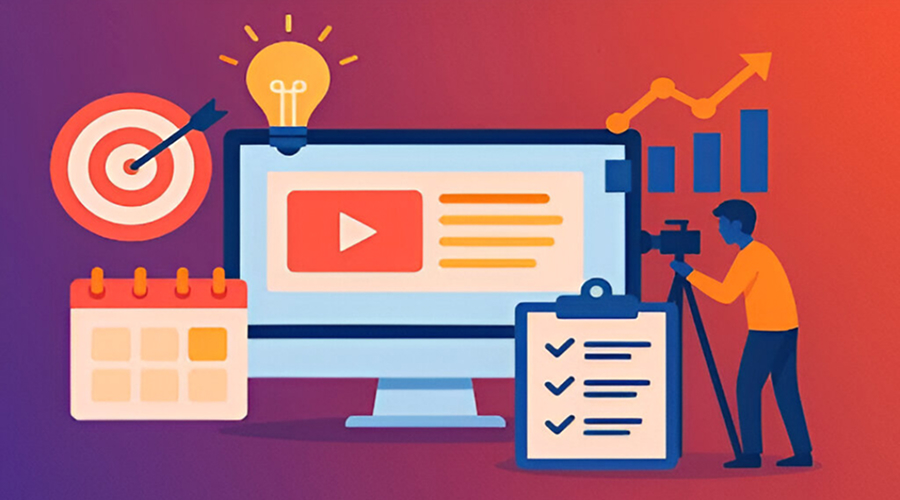
That’s the magic formula: cite your analytics when you’re scheduling. What worked well? Did anything bomb epically? Did anything have heavy watch time but a poor CTR?
Harness the data to inform your future uploads. Your audience enjoys your unboxing video segments but avoid the lengthy rants. That is to say, what do you know? More boxes, less rants.
Engagement Planning is also Content Planning
Comments are content. Online votes are content. DM shorts? Again, content. Your viewers aren’t just going to claps, They are going to chat, recommend, and wish to be part of the process of making content.
Your strategy should incorporate
- Days to respond to comments
- Surveys to engage audience members in your next video topic
- Q&A sessions or shoutouts
That turns passive observers into ride-or-die fans. And isn’t that what you desire?
Also Read: How To Leverage Content Marketing For E-commerce Growth
Use Tools, But Do Not Sell Your Soul
There are dozens of planning tools, AI video scriptwriters, Notion templates, and so forth. Use them. Leverage them. But never let them dilute your voice. Your fans followed you, not a generic robotic voice.
It has to be your voice, your quirks, your sense of humor, and your bad days as well. That’s how you are a human being in a very loud algorithmic environment.
Be Ready to Switch
Planning is strength, but flexibility is survival. Your video did not come to fruition. Something new emerged as a trend, and your people are demanding that you respond. Do not lose because “it wasn’t planned.”
Top YouTubers know how to stick to the course, adhering to the blueprint and when to break the blueprint and implement a “wild card.” Fill buffer weeks or simply complete your blueprint with “wild cards.”
FAQs
Q1. How many videos should you pre-schedule?
Best 3–4 weeks in the future. Long enough that you don’t panic, short enough that you don’t become rigid.
Q2. Am I required to post weekly?
Not much. Consistency is much the same as frequency. You update once every 10-day span regularly; that’s a strategy too.
Q3. Should I remove low-performing videos?
No. Learn from them. They are analytics-rich. Make your content better using their analytics.
Q4. What day to post is best?
Check your channel’s analytics. All of you will be different. Start with your audience’s “most active times” data.

